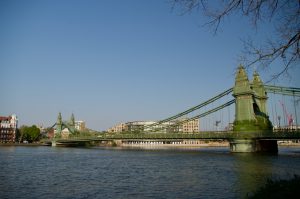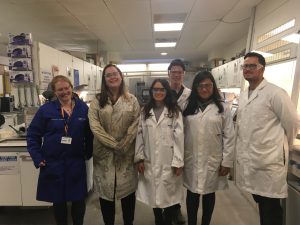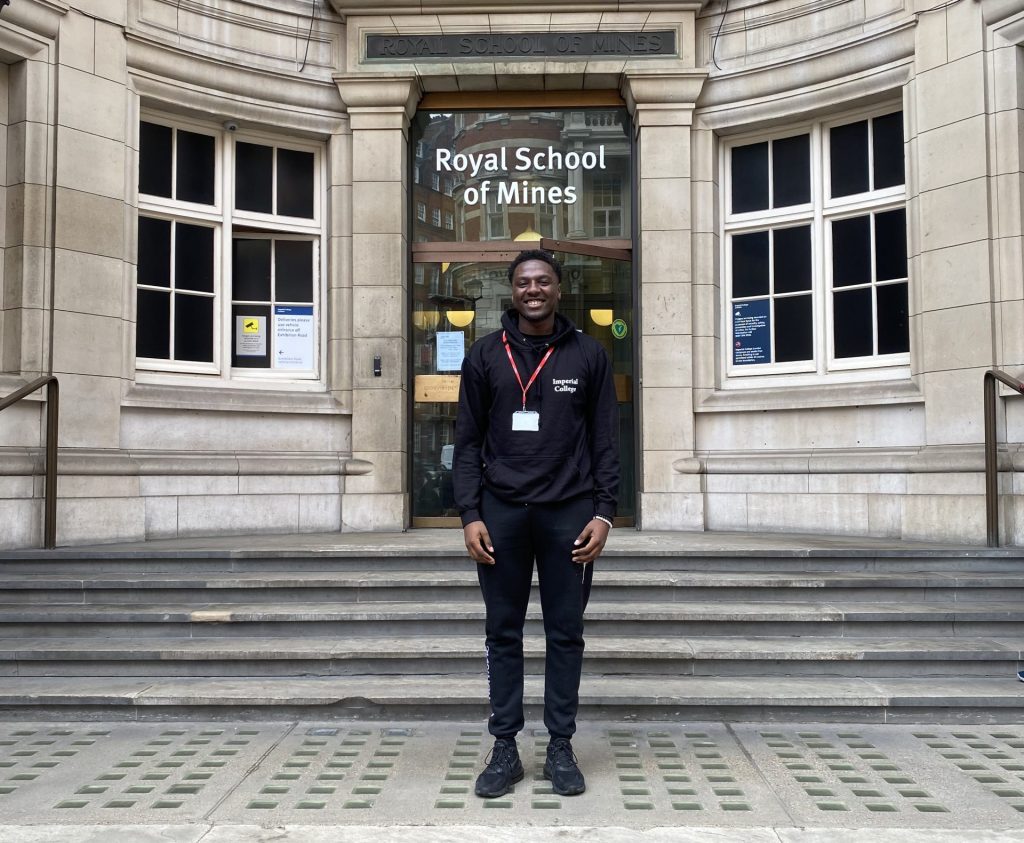Dr Stella Pedrazzini is a Lecturer in Engineering Alloys and Metallurgy in the Department of Materials.
is a Lecturer in Engineering Alloys and Metallurgy in the Department of Materials.
She works on the environmental degradation of engineering alloys, with a particular interest in oxidation and hot corrosion of nickel and cobalt-based superalloys, aqueous corrosion of steel as well as advanced characterisation techniques such as transmission electron microscopy (TEM) and atom probe tomography (APT). Dr Pedrazzini also teaches the 1st year undergraduate module in Materials Electrochemistry.
-
Can you tell us more about your research area and the importance of investigating metallic corrosion?
Imperial College is based in central London, and yet no one comes to work by driving through Hammersmith bridge, even though avoiding it leads to a very long detour. There’s a very simple reason for this: the bridge is closed for the next 7 years. It is in immediate danger of collapse due to decades of unchecked corrosion[1]. And this is just the tip of the iceberg.
Metals have been used by mankind since about 3000 BC, and in thousands of years, we have not found a way to stop them from corroding. That is because most pure metals are a human creation: in nature, they are only found as ores. Ores are generally a mixture of metal oxides, chlorides or sulfides. We process ores to become pure metals, we “borrow them” from nature for a few years but there is always a strong driving force acting to revert them back to their stable state. We are fighting an uphill battle with corrosion.

But this is a battle worth fighting: we need metals. Metals have properties other materials just don’t have. They are ductile, strong, electrically and thermally conductive and their properties can be tailored through alloying. Over the years, our metallurgical investigation tools have become increasingly sophisticated, allowing step-changes in progress towards the understanding of metallic corrosion and protection techniques.
-
What led you to study metallic corrosion?
When I was a student at the European School of Brussels I always favoured the sciences over other subjects, particularly chemistry. That’s part of the reason I chose to study Materials Science at university: it is a mixture of chemistry, physics and engineering.
Once I started the courses, I realised I had a particular interest in metallurgy, an interest which I pursued during my MEng and DPhil degrees at the University of Oxford. When I graduated, I started working on different metal investigation tools, such as atomic scale microscopy. It’s around this time when I started working on corrosion: corrosion is very difficult to investigate and I really enjoyed the challenge. I worked on corrosion as a researcher for almost 5 years, initially at the University of Oxford, then at the University of Cambridge, before establishing my own research group at Imperial College London.
To this day, very few research groups around the world work on corrosion due to the challenges involved in this type of investigation. I am delighted to receive support for my corrosion work from Imperial College, from the Engineering and Physical Sciences Research Council, from the Royal Academy of Engineering and from various industrial partners, all of which serves to highlight the industrial importance and economic impact of corrosion research.
-
What are the main aims of your research?
Our aims are:
- To be able to simulate in our labs the working environment of a metal (eg when used in a jet engine, industrial-scale furnace, industrial gas turbine, car engine, nuclear reactor, off-shore platform, wind farm etc). This allows us to corrode the metals in controlled laboratory experiments, without the costs and safety risks of them corroding in-service.
- To understand the mechanisms by which the metals corrode so that we can prevent them. This can be done by changing the alloy composition, adding some in-built corrosion protection (like stainless steel), or by adding coatings or other protection mechanisms.
- To use this knowledge to be able to predict how metals would corrode in-service in specific applications. This allows us to predict their lifetime, therefore reducing safety concerns.
My research group is divided by material: we have people working on steels, on nickel-based superalloys, on titanium alloys and more recently on zirconium too. The noble metals are the only ones that don’t corrode (…easily! Though that can be arranged too!), everything else is worthy of investigation.
-
How could this research potentially benefit society or the way we live?

Corrosion has a huge environmental, safety and economic impact: it costs us 3.4% of global GDP yearly[2]. It presents challenges in almost every industry: construction, transportation, bio-medical, electronics, power generation and many more.
We only need to go through some newspaper headlines to realise the effect of corrosion on our daily lives. Bridges have been shut[3], or have collapsed[4], aeroplanes have been grounded[5], oil pipelines have burst[6], nuclear site accidents have happened[7], all due to unchecked corrosion. In addition, due to some recent high-profile retirements in the field, there is currently a strong need for more corrosion management professionals both in the UK and worldwide.
Some of the work from my own research group has helped inform the corrosion rates of aero-engines, industrial gas turbines, nuclear reactors and medical implants exposed to body fluids.
-
What are your next steps are in your research? Are there any challenges ahead?
Since moving to Imperial in 2018 I have focussed all my efforts on building up our corrosion research capabilities. This involves building unique equipment that can allow us to simulate metal service conditions, so we can safely corrode metals in a controlled manner in the lab.
All this equipment has to be bespoke and homemade: no companies produce it or sell anything like it. This includes bespoke electrochemical cells that allow us to apply mechanical pressures on the samples while in a wet corrosive environment, or to handle corrosive gases while fatigue testing the metallic components. Some of it involves safely pressurising very corrosive gases like H2S, or heating the samples to over 1400 °C, if that is the environment they have to survive in-service. We also just received funding from the Engineering and Physical Sciences Research Council for a new microscopy facility which will be instrumental for analysing corroded samples.
All these new unique facilities are now coming together, so I am looking forward to being able to expand the range and tackle more corrosion problems as they arise.
[1] http://www.transport-network.co.uk/Hammersmith-Bridge-wont-open-until-2027-after-decades-of-unchecked-corrosion/16940
[2] http://impact.nace.org/economic-impact.aspx
[3] http://www.transport-network.co.uk/Hammersmith-Bridge-wont-open-until-2027-after-decades-of-unchecked-corrosion/16940
[4] https://www.independent.co.uk/news/world/europe/genoa-bridge-collapse-engineer-riccardo-morandi-warning-corrosion-rust-concrete-a8498716.html
[5] https://www.telegraph.co.uk/business/2018/11/09/rolls-royce-admits-yet-corrosion-problems-jet-engines/
[6] https://www.theguardian.com/environment/2015/jun/04/us-oil-pipeline-left-to-rust-to-paper-thin-before-145km-pacific-ocean-slick
[7] https://www.nytimes.com/2000/03/03/nyregion/corrosion-seen-as-a-plant-accident-cause.html
 Lukau Mbolokele is a second-year undergraduate student in the Department of Materials. For Black History Month 2021, he has shared more about his journey into Materials Science, having pride in your achievements and the importance of diversity in Science.
Lukau Mbolokele is a second-year undergraduate student in the Department of Materials. For Black History Month 2021, he has shared more about his journey into Materials Science, having pride in your achievements and the importance of diversity in Science. 